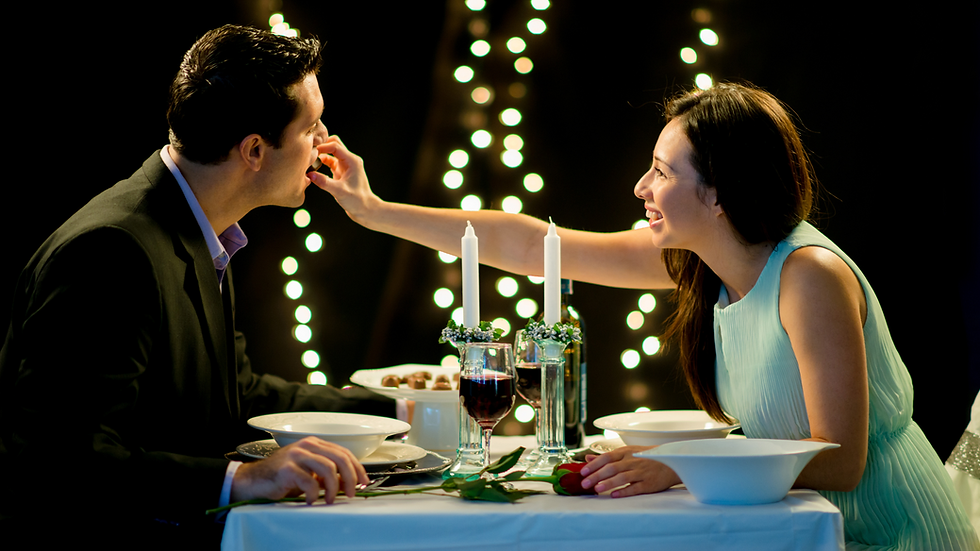Wine Tasting 101: A Beginner's Guide to Unlocking the World of Wine
- Jun 21, 2023
- 4 min read

Welcome to Wine Tasting 101, a comprehensive beginner's guide designed to introduce you to the captivating art of wine tasting. Whether you're a curious enthusiast or a novice seeking to develop your palate, this guide will provide you with the essential knowledge and techniques to enhance your wine tasting experience. From understanding the sensory aspects of wine to deciphering tasting notes and exploring wine labels, let's embark on an exciting journey of discovery together.
The Basics of Wine Tasting: To begin our exploration, let's dive into the fundamental steps of wine tasting. These steps, often referred to as the "three S's," involve observing the wine's appearance, appreciating its aromas, and savoring its flavors and structure.
Visual Examination: Start by examining the wine's color and clarity. Hold the glass against a white background and observe its hue, intensity, and any variations towards the rim. Note that the color can provide insights into the wine's age, grape variety, and winemaking process.
Olfactory Analysis: Bring the glass to your nose and take a moment to appreciate the wine's aromas. Swirl the wine gently to release its bouquet and inhale deeply. Notice the various scents, such as fruits, flowers, spices, or even earthy notes. The aroma profile can unveil valuable information about the wine's characteristics.
Gustatory Examination: Now it's time to taste the wine. Take a small sip and let it coat your entire palate. Pay attention to the flavors, texture, acidity, tannins (in red wines), and sweetness (if present). Note the balance between these elements, as it contributes to the overall enjoyment and quality of the wine.
Deciphering Tasting Notes: As you progress in your wine tasting journey, you'll encounter tasting notes—a written description of a wine's characteristics. Understanding the language used in tasting notes can help you communicate your own experiences and better appreciate the nuances of different wines.
Flavor and Aroma Profiles: Tasting notes often describe the flavors and aromas present in a wine. Familiarize yourself with terms such as "fruity," "floral," "spicy," or "earthy." Develop a sensory vocabulary by referring to wine aroma and flavor wheels, which provide a visual representation of various descriptors.
Structure and Balance: Tasting notes may also touch on a wine's structure and balance. Structure refers to the combination of acidity, tannins (in red wines), and body, while balance refers to how well these elements work together. Understanding these concepts helps in evaluating a wine's overall harmony.
Personal Interpretation: Remember that tasting notes are subjective and can vary from person to person. Your own interpretation of a wine's flavors and aromas is equally valid. Trust your palate and explore your own preferences as you continue to taste different wines.
Understanding Wine Labels: Wine labels contain valuable information that can guide your selection process. Familiarize yourself with the key elements found on wine labels to make informed choices and discover wines that align with your preferences.
Grape Varieties: Labels often indicate the grape variety or varieties used in winemaking. Understanding the characteristics associated with different grape varieties can provide insight into the potential flavor profiles of the wine.
Appellations and Regions: Wine labels may include information about the wine's appellation or region of origin. Explore renowned wine regions and their unique terroirs to gain a deeper appreciation of the wines they produce.
Vintage Years: The vintage year refers to the year the grapes were harvested. In some cases, certain vintages may be regarded as exceptional due to favorable weather conditions. Consider researching specific vintages for regions or grape varieties you are interested in.
Wine Classifications and Designations: Certain wines carry specific designations or classifications, such as "Reserve," "Grand Cru," or "DOC/DOCG." Understanding these classifications can provide insights into the wine's quality and adherence to specific production standards.
Developing Your Palate: Cultivating a discerning palate takes practice. Here are some strategies to help you develop your tasting skills and deepen your appreciation for wine:
Taste Different Wine Styles: Expose yourself to a variety of wines, including whites, reds, rosés, sparkling, and fortified wines. Each style offers unique characteristics and flavor profiles, expanding your palate and broadening your wine knowledge.
Comparative Tasting: Compare wines side by side to discern the nuances between them. This practice helps develop your ability to identify differences in flavors, aromas, and textures, and improves your overall sensory memory.
Blind Tasting: Challenge yourself by participating in blind tastings. Without knowledge of the wine's identity, you rely solely on your senses to evaluate it. Blind tastings sharpen your sensory skills and foster unbiased judgments.
Attend Wine Tastings and Events: Participate in wine tastings or visit wineries to gain firsthand experience and learn from knowledgeable professionals. Engage with winemakers and fellow wine enthusiasts to exchange insights and expand your understanding.
Congratulations on embarking on the journey of wine tasting! By understanding the basics, deciphering tasting notes, familiarizing yourself with wine labels, and continuously developing your palate, you are well on your way to unlocking the vast and fascinating world of wine. Remember, the most important aspect of wine tasting is enjoying the experience and exploring the wines that captivate your senses. Cheers to your evolving palate and the exciting discoveries that await you in the world of wine!




Comments